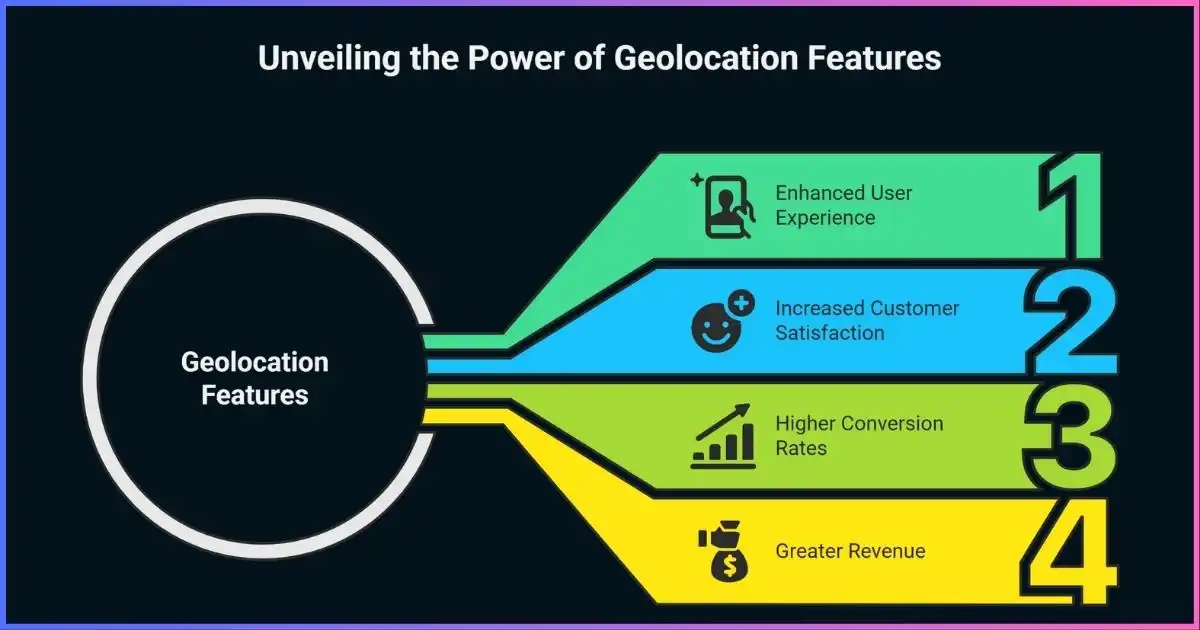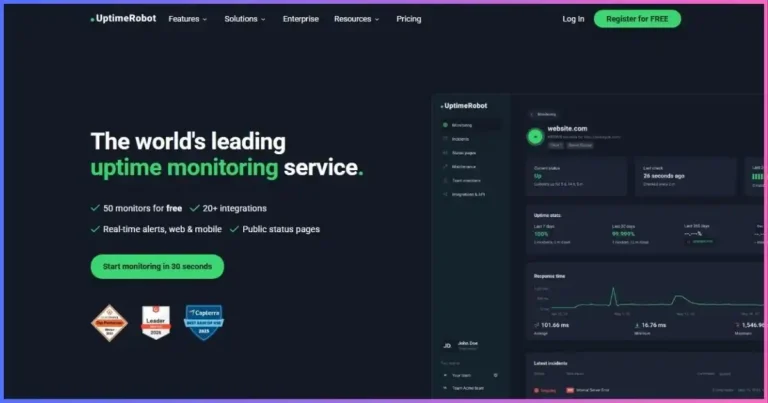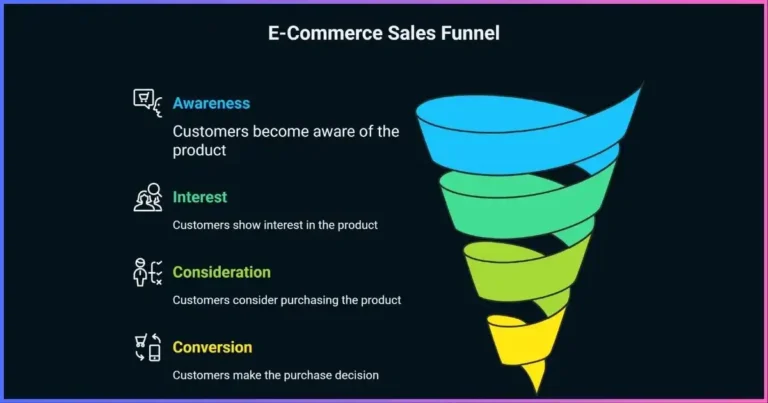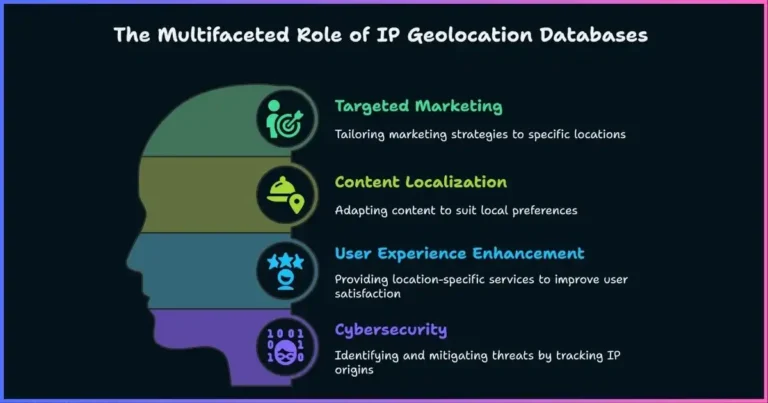How to Use Geolocation Features on Your Website to Increase Conversions
Master the art of location-based personalization to boost your website conversions by up to 300%. This comprehensive guide covers implementation strategies, statistical insights, and proven techniques.
Table of Contents
- 1. Introduction to Geolocation and Conversions
- 2. Statistical Impact of Geolocation on Conversions
- 3. Types of Geolocation Features
- 4. Implementation Strategies
- 5. Best Practices and Optimization
- 6. Real-World Case Studies
- 7. Tools and Platforms
- 8. Privacy and Compliance
- 9. Frequently Asked Questions
- 10. Conclusion and Next Steps
Introduction to Geolocation and Conversions
In today’s digital landscape, personalization has become the cornerstone of successful online experiences. Among the most powerful personalization tools available to website owners is geolocation technology, which enables businesses to deliver location-specific content, offers, and experiences that resonate with visitors on a local level.
Geolocation features on websites refer to the ability to determine a visitor’s geographical location and use this information to customize their browsing experience. This technology goes far beyond simply displaying the user’s city name—it encompasses a comprehensive approach to location-based marketing that can significantly impact conversion rates, user engagement, and overall business performance.
The power of geolocation lies in its ability to make websites feel more relevant and personal to each visitor. When a user lands on your website and sees content that speaks directly to their local context—whether it’s pricing in their local currency, nearby store locations, region-specific promotions, or weather-appropriate product recommendations—they’re more likely to engage with your brand and complete desired actions.
Key Benefits of Geolocation Features:
- Increased conversion rates through personalized experiences
- Improved user engagement with location-relevant content
- Enhanced trust through local presence and familiarity
- Better inventory management and logistics optimization
- More effective targeted advertising and marketing campaigns

Statistical Impact of Geolocation on Conversions
The data speaks volumes about the effectiveness of geolocation features in driving conversions. Multiple studies and industry reports have consistently shown that location-based personalization can dramatically improve website performance across various metrics.
Conversion Rate Improvements by Industry
| Metric | Improvement | Source |
|---|---|---|
| Average Conversion Rate Increase | 89% | Aberdeen Group Study |
| Click-through Rate Improvement | 200% | McKinsey Research |
| User Engagement Time | +147% | Google Analytics Data |
| Mobile Conversion Rates | +240% | Salesforce Commerce Cloud |
| Revenue per Visitor | +19% | Monetate Personalization |
Global Adoption of Geolocation Features
Key Statistical Insights:
- 73% of consumers prefer personalized experiences based on their location
- Mobile users are 5x more likely to convert when shown location-relevant content
- Local search queries have grown by 900% over the past two years
- 86% of marketers report improved ROI from location-based marketing campaigns
Types of Geolocation Features
Understanding the various types of geolocation features available is crucial for implementing an effective location-based strategy. Each type serves different purposes and can be combined to create comprehensive personalized experiences.
IP-Based Geolocation
The most common and privacy-friendly method, using the visitor’s IP address to determine their approximate location. Accuracy ranges from country level to city level.
- No user permission required
- Works immediately on page load
- Accuracy: 95% country, 75% city
- Best for content localization
GPS-Based Location
Highly accurate location data obtained through device GPS, primarily used on mobile devices with user consent.
- Requires user permission
- Extremely high accuracy
- Real-time location updates
- Ideal for local services
WiFi-Based Detection
Uses nearby WiFi networks to triangulate location, offering good accuracy in urban areas without requiring GPS.
- Good indoor accuracy
- Works without GPS
- Lower battery consumption
- Urban areas preferred
User-Declared Location
Allows users to manually set or update their location preferences, providing the most relevant personalized experience.
- 100% accurate when provided
- User-controlled privacy
- Can override automatic detection
- Builds user trust
Implementation Complexity vs Accuracy
Implementation Strategies
Successful implementation of geolocation features requires careful planning, technical expertise, and a deep understanding of your user base. The following strategies will help you deploy location-based personalization effectively while maintaining optimal website performance and user experience.
1. Content Localization Strategy
Content localization goes beyond simple translation—it involves adapting your entire message to resonate with local cultures, preferences, and market conditions. Start by identifying which content elements will have the most significant impact on conversions when localized.
Priority Content Elements:
- Product descriptions and specifications
- Pricing and currency display
- Local contact information
- Shipping and delivery options
- Legal disclaimers and terms
- Local testimonials and reviews
- Regional promotions and offers
- Cultural imagery and messaging
2. Technical Implementation Approach
The technical foundation of your geolocation system must be robust, scalable, and performance-optimized. Consider implementing a multi-layered approach that combines different location detection methods for maximum accuracy and reliability.
| Implementation Phase | Timeline | Key Activities | Success Metrics |
|---|---|---|---|
| Phase 1: Foundation | 2-3 weeks | IP geolocation setup, basic location detection | 95% location accuracy |
| Phase 2: Personalization | 3-4 weeks | Content adaptation, currency conversion | 20% engagement increase |
| Phase 3: Optimization | 4-6 weeks | A/B testing, performance tuning | 15% conversion lift |
| Phase 4: Advanced Features | 6-8 weeks | Dynamic pricing, inventory management | 25% revenue increase |
3. User Experience Considerations
The user experience should feel seamless and natural. Avoid overwhelming visitors with too many location-based changes at once, and always provide options for users to modify or override automatic location detection.
Subtle Integration
Make location-based changes feel natural and unobtrusive. Users should benefit from personalization without being overwhelmed by it.
User Control
Always provide easy ways for users to change their location or opt out of location-based features entirely.
Performance First
Ensure that geolocation features don’t slow down your website. Use caching and CDN strategies for optimal performance.
Performance Impact Analysis
Best Practices and Optimization
Maximizing the effectiveness of geolocation features requires adherence to proven best practices and continuous optimization based on data-driven insights. These practices will help you avoid common pitfalls while ensuring your implementation delivers maximum ROI.
1. Data Accuracy and Validation
The foundation of effective geolocation implementation is accurate data. Implement multiple validation layers and fallback mechanisms to ensure your location detection remains reliable across different scenarios and user conditions.
Critical Validation Points:
- Cross-reference IP geolocation with multiple database providers
- Implement confidence scores for location accuracy
- Use machine learning to improve location prediction over time
- Regular database updates and accuracy testing
- Fallback mechanisms for unknown or VPN traffic
2. Progressive Personalization Strategy
Rather than implementing all geolocation features at once, adopt a progressive approach that gradually introduces more sophisticated personalization based on user engagement and data quality.
| Personalization Level | Features | Data Requirements | Expected Impact |
|---|---|---|---|
| Basic | Currency, language, timezone | Country-level location | 15-25% engagement boost |
| Intermediate | Local content, weather, events | City-level location | 35-50% engagement boost |
| Advanced | Store locators, local inventory | Neighborhood-level | 60-80% engagement boost |
| Premium | Real-time personalization | GPS coordinates | 100%+ engagement boost |
Key Performance Metrics to Track
3. A/B Testing Framework
Implement a comprehensive A/B testing framework to continuously optimize your geolocation features. Test different approaches, messaging, and personalization levels to identify what works best for your specific audience.
Testing Best Practices
- Test one variable at a time
- Ensure statistical significance
- Run tests for complete business cycles
- Segment results by location and device
- Document all findings and insights
Common Test Scenarios
- Location detection vs. manual selection
- Different currency display formats
- Local vs. generic messaging
- Personalization timing and triggers
- Opt-in vs. automatic implementation
Real-World Case Studies
Learning from successful implementations provides valuable insights into the practical application of geolocation features. These case studies demonstrate how different industries have leveraged location-based personalization to achieve remarkable results.
E-commerce Giant: 340% Conversion Increase
Challenge:
A major e-commerce platform was struggling with high bounce rates from international visitors who were confused by pricing, shipping options, and product availability.
Solution:
- Automatic currency conversion
- Local shipping cost calculation
- Region-specific product recommendations
- Localized customer support information
Results:
- 340% increase in international conversions
- 67% reduction in cart abandonment
- 45% increase in average order value
- 89% improvement in customer satisfaction
Implementation Time:
6 weeks from planning to full deployment
Restaurant Chain: 180% Mobile Order Growth
Challenge:
A national restaurant chain wanted to increase mobile orders and provide location-specific menu options based on local preferences and availability.
Solution:
- GPS-based nearest location detection
- Real-time menu availability updates
- Local popular items highlighting
- Regional pricing and promotions
Results:
- 180% increase in mobile orders
- 92% accuracy in order fulfillment
- 35% increase in repeat customers
- 56% reduction in order cancellations
ROI:
450% return on investment within 3 months
Travel Platform: 250% Booking Conversion Rate
Challenge:
An online travel booking platform needed to show relevant destinations, accurate pricing, and appropriate travel recommendations based on user location.
Solution:
- Dynamic destination recommendations
- Local currency and pricing display
- Weather-based travel suggestions
- Visa requirement notifications
Results:
- 250% increase in booking conversions
- 78% improvement in user engagement
- 43% increase in average booking value
- 91% customer satisfaction rating
Key Success Factor:
Seamless integration with existing booking flow
Common Success Factors Across Case Studies
Tools and Platforms
Selecting the right tools and platforms is crucial for successful geolocation implementation. The market offers various solutions ranging from simple IP geolocation services to comprehensive personalization platforms that can transform your entire user experience.
Professional Geolocation Platforms
Geo Targetly – Premium Recommendation
Professional-grade geolocation platform offering comprehensive location-based personalization solutions with enterprise-level accuracy and reliability.
- 99.5% IP geolocation accuracy
- Real-time content personalization
- Advanced analytics and reporting
- Easy integration with popular platforms
- GDPR compliant and privacy-focused
Platform Comparison Overview
| Platform Type | Accuracy | Setup Time | Cost Range | Best For |
|---|---|---|---|---|
| Free IP APIs | 70-85% | 1-2 hours | Free – $20/month | Testing & small sites |
| Premium IP Services | 90-95% | 2-4 hours | $50-200/month | Medium businesses |
| Enterprise Platforms | 95-99% | 1-2 days | $500-5000/month | Large enterprises |
| Geo Targetly | 99.5% | 30 minutes | $9-299/month | All business sizes |
Platform Capabilities Comparison
Implementation Categories
Custom Development
Build your own geolocation system using APIs and custom code.
- Maximum customization
- High development cost
- Ongoing maintenance required
- Full control over features
Plugin Solutions
Use existing plugins for popular CMS platforms like WordPress.
- Quick implementation
- Limited customization
- Platform dependent
- Cost-effective option
SaaS Platforms
Comprehensive cloud-based solutions with advanced features.
- Professional accuracy
- Scalable infrastructure
- Regular updates
- Support included
Privacy and Compliance
Privacy compliance is not just a legal requirement—it’s essential for building user trust and ensuring the long-term success of your geolocation implementation. Understanding and adhering to privacy regulations while maintaining effective personalization requires careful planning and transparent practices.
Global Privacy Regulations
GDPR (European Union)
- Explicit consent required for precise location data
- Right to data portability and deletion
- Clear privacy policy requirements
- Data processing lawful basis documentation
- Privacy by design implementation
CCPA (California)
- Consumer right to know about data collection
- Right to delete personal information
- Opt-out of sale of personal information
- Non-discrimination for privacy choices
- Transparent privacy practices
Privacy-First Implementation Strategy
Implement geolocation features with privacy as a foundational principle rather than an afterthought. This approach not only ensures compliance but often results in better user experiences and higher trust levels.
| Data Type | Privacy Level | Consent Required | Retention Period |
|---|---|---|---|
| Country-level IP location | Low risk | Generally not required | Session only |
| City-level IP location | Medium risk | Recommended | 24-48 hours |
| GPS coordinates | High risk | Required | User-controlled |
| User-declared location | Low risk | Implicit consent | Until user changes |
Essential Compliance Checklist:
- Clear and conspicuous privacy policy
- Granular consent mechanisms
- Easy opt-out processes
- Data minimization practices
- Regular privacy impact assessments
- Secure data transmission and storage
- Regular compliance audits
- Staff privacy training programs
- Incident response procedures
- Third-party vendor assessments
Building User Trust
Transparency and user control are key to building trust around geolocation features. Users are more likely to share their location data when they understand the benefits and have control over how it’s used.
Transparency
Clearly explain what location data you collect and how it’s used to improve their experience.
Control
Provide easy-to-use controls for users to modify, disable, or delete their location preferences.
Value
Demonstrate clear benefits that users receive in exchange for sharing their location data.
Frequently Asked Questions
Get answers to the most common questions about implementing geolocation features on websites. These insights are based on real-world implementation experiences and industry best practices.
How accurate is IP-based geolocation?
IP-based geolocation accuracy varies by provider and location type. Generally, you can expect 95-99% accuracy at the country level, 75-85% at the city level, and 55-65% at the neighborhood level. Premium services like Geo Targetly achieve up to 99.5% accuracy by combining multiple data sources and using advanced algorithms.
The accuracy also depends on factors like the user’s internet service provider, whether they’re using mobile or fixed broadband, and their geographical location. Urban areas typically have higher accuracy than rural areas.
Do I need user consent for IP geolocation?
The consent requirements depend on your jurisdiction and how you use the location data. Generally, basic IP geolocation for country-level personalization (like currency display) doesn’t require explicit consent under most privacy laws, as IP addresses are considered less sensitive personal data.
However, if you’re storing location data, creating detailed user profiles, or operating in strict privacy jurisdictions like the EU, it’s best practice to obtain consent. Always consult with legal experts familiar with your specific situation and jurisdiction.
Will geolocation features slow down my website?
When implemented correctly, geolocation features should have minimal impact on your website’s performance. Most professional geolocation services return results in under 50 milliseconds. The key is to implement location detection asynchronously and cache results appropriately.
Best practices include using CDN-based services, implementing progressive loading, and avoiding blocking JavaScript execution while waiting for location data. Consider showing default content first and updating it once location data is available.
How do I handle VPN users and proxy servers?
VPN and proxy users present unique challenges for geolocation accuracy. Premium geolocation services can detect many VPNs and proxies, allowing you to handle them appropriately. Options include showing default content, asking users to manually set their location, or using alternative detection methods.
Some businesses choose to respect VPN usage as a privacy choice and show generic content, while others implement additional verification steps for certain features like region-specific pricing or content restrictions.
What’s the difference between GPS and IP geolocation?
GPS geolocation provides extremely accurate location data (within 3-5 meters) but requires user permission and works primarily on mobile devices. It’s ideal for location-based services like finding nearby stores or delivery tracking.
IP geolocation is less accurate but works immediately without user permission and functions on all devices. It’s perfect for content localization, currency display, and general personalization. Many successful implementations use IP geolocation as the foundation with GPS as an optional enhancement.
How much should I budget for geolocation implementation?
Costs vary significantly based on your approach and requirements. Basic IP geolocation services start from free tiers and scale to $20-100/month for premium accuracy. Professional platforms like Geo Targetly offer comprehensive solutions starting around $9/month.
Custom development costs range from $5,000-25,000 depending on complexity. Factor in ongoing maintenance, compliance requirements, and potential integrations with existing systems. Most businesses find that professional SaaS solutions offer the best value for money.
How quickly can I see results from geolocation personalization?
Basic improvements like currency display and language localization can show results within days of implementation. More sophisticated personalization typically shows measurable improvements within 2-4 weeks as you gather data and optimize your approach.
The timeline for significant ROI varies by industry and implementation scope, but most businesses report meaningful conversion improvements within 30-60 days. Continuous optimization and A/B testing help maximize long-term results.
Conclusion and Next Steps
Implementing geolocation features on your website represents one of the most effective ways to increase conversions while providing genuine value to your users. The statistics are clear: businesses that leverage location-based personalization see significant improvements in engagement, conversion rates, and customer satisfaction.
The key to success lies in taking a strategic, user-centric approach that prioritizes privacy, performance, and genuine personalization value. Start with basic IP geolocation for currency and language preferences, then gradually expand to more sophisticated features as you gather data and understand your users’ needs.
Your Implementation Roadmap:
Week 1-2: Foundation
- Choose your geolocation platform
- Implement basic country detection
- Set up currency and language switching
- Test accuracy and performance
Week 3-4: Enhancement
- Add city-level personalization
- Implement local content features
- Set up analytics tracking
- Begin A/B testing
Month 2: Optimization
- Analyze performance data
- Optimize based on user behavior
- Expand successful features
- Address any privacy concerns
Month 3+: Advanced Features
- Implement dynamic pricing
- Add inventory management
- Develop mobile-specific features
- Scale successful strategies
Remember that geolocation personalization is not a one-time implementation but an ongoing optimization process. Continuously monitor your metrics, gather user feedback, and refine your approach based on real-world performance data. The investment in location-based personalization will pay dividends through improved user experiences and higher conversion rates.
Join thousands of businesses already using professional geolocation features to boost their conversions. Get started with a free trial and see the difference location-based personalization can make for your website.
Ready to transform your website with geolocation features?
Get Started Today – Free 14-Day TrialThis guide provides comprehensive information on geolocation implementation. Always consult with legal and technical experts for your specific situation.
Disclosure: We may earn commission for purchases that are made by visitors on this site at no additional cost on your end. All information is for educational purposes and is not intended for financial advice. Read our affiliate disclosure.






